Quality vs Quantity: The challenge of providing education to refugees in Kenya
“The challenges are many.” It’s a phrase you hear often in East Africa and it rings especially true in the Kakuma refugee camp in Kenya.
CLOSE TO BORDERS of Uganda, South Sudan and Ethiopia, Kakuma has harboured refugees from neighbouring countries for almost thirty years. It was established when a group of children, the ‘Lost Boys’, arrived from Sudan in 1992. In that year, Ethiopians and Somalis also fled to the camp after political crisis in their countries.
Today, Kakuma and the surrounding areas hosts a mix of nationalities and over half of the population is under eighteen. They are well served by the 26 primary and secondary schools in and around the camp. Such is its reputation for education, that children will walk for days from South Sudan to Kakuma to attend school. In November last year, three quarters of the 3,000 children in the reception centres had travelled to Kakuma to enroll in school.
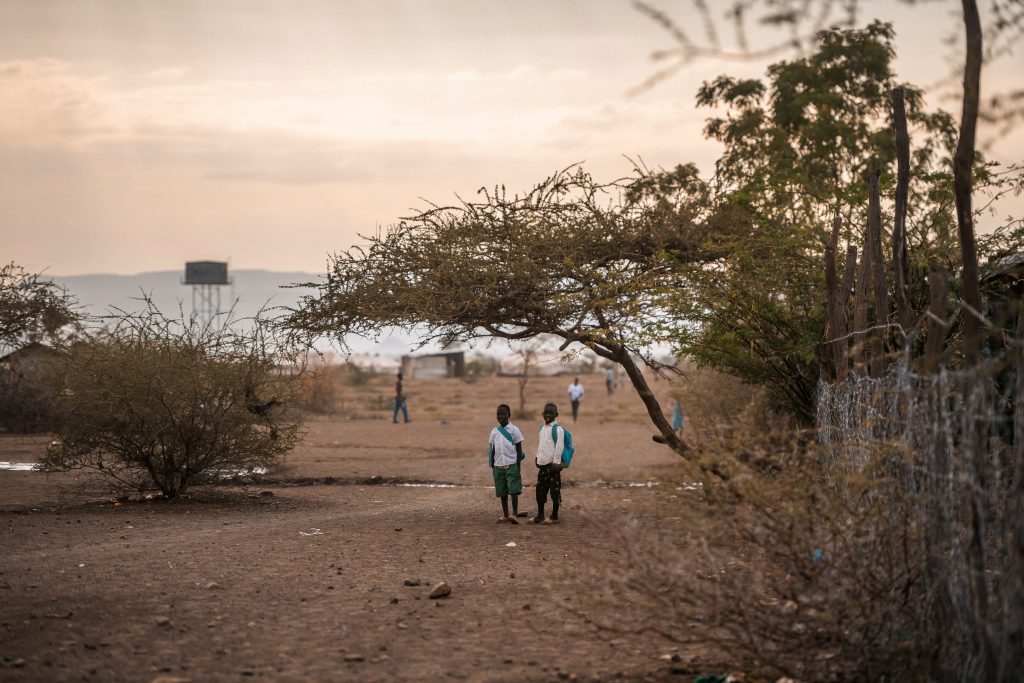
The Kenyan Government welcomes them as best they can. Refugees in Kakuma are given a plot of land and poles and plastic sheeting to build a basic shelter. In Kalobeyei, a settlement thirty kilometres from Kakuma, they can build permanent homes, but this is barely enough to protect them from temperatures that can reach over forty degrees celsius.
Kakuma is located in one of the driest parts of Kenya and those who live there, even the local population, are dependent upon aid. Every year, new residents arrive, stretching resources further and further. In Kalobeyei, recently arrived refugees live among the local population. Established in 2016, the settlement is a departure from the Kenya Government’s earlier policy which discouraged refugees from working and integrating into the local population. In Kalobeyei, refugees and Kenyans live, work and study together. This is where FCA works.
Refugees crowd into classrooms
We operate eight primary schools for Kenyan and refugee children with funding from the Bureau of Population, Refugees & Migration, the United Nations High Commission for Refugees (UNHCR) and the UN Children’s Fund and the Ministry of Foreign Affairs of Finland. According to UNHCR, 77 percent of children aged 6-13 there attend school, almost on par with the national average of 80 percent. But the number of students is ever increasing and challenges of operating crowded classrooms is no more evident than in Kalobeyei.
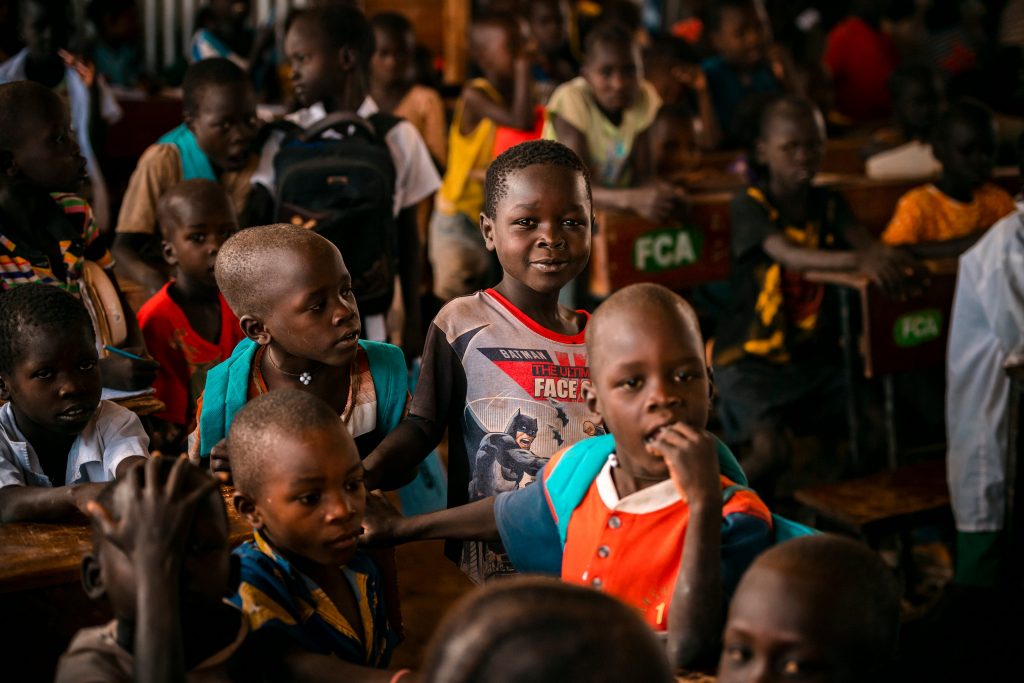
When school starts at 8am the temperature is already over thirty degrees Celsius. The air is full of dust and the shouts and laughter of children emanate from the classrooms. Inside the large, corrugated steel buildings, children are crammed four or five to a desk, overflowing onto the floor. Each class has at least one hundred students, some classes, close to two hundred.
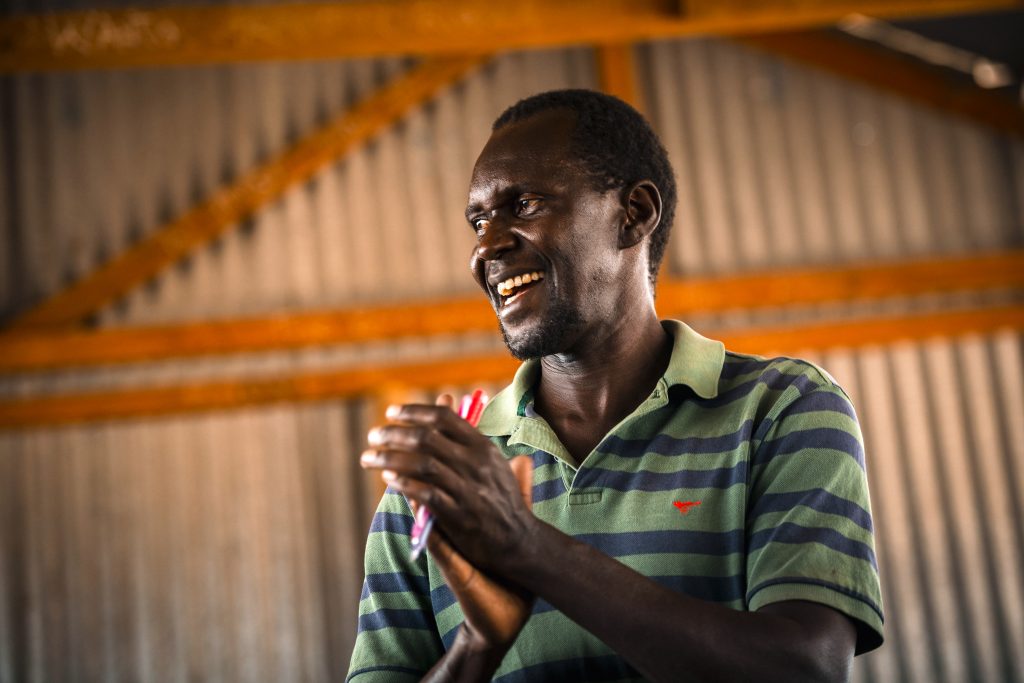
Martin Albino Ayyiro was was a teacher in Torit, South Sudan, for twenty-five years, before conflict forced him to flee to Kenya. In South Sudan, his classes had a maximum of sixty students.
He now teaches at Future Bright Primary School and says,
“You cannot control the situation of the classroom because you don’t know who understands you and who doesn’t understand you,” says Ayyiro.
Teachers struggle to educate
In his classroom in Kalobeyei, Ayyiro often struggles to teach his students.
“… some children are very difficult, or they have problems. Maybe a child cannot come to school or can come irregular or (they) can come late to school. So, sometimes, maybe they are sleeping in the class,” he says.
Most of the refugees in Kalobeyei are also from Torit and, as a member of this community, Ayyiro not only speaks their native language, but often knows the parents, so he will make home visits . As a refugee teacher, he is not qualified in Kenya and so is paid as a volunteer (53EURO per month) in addition to the aid he receives as a refugee. Although he faces significant challenges, there are shared by everyone who works in the program.
Richard Tsalwa is FCA’s Project Coordinator in Kalobeyei and one of the first things you notice about Tsalwa is his eyes. They are kind, but tired. He oversees eight primary schools, 231 teachers and 21,000 students. He often talks about retiring to Kakamega, in Western Kenya, where he is from.
When Tsalwa began studying education, he was guaranteed a job. But by the time he graduated (1998) the Kenyan Government had stopped employing teachers because of a World Bank structural adjustment.
“We were the first class not to be posted. We all went into other jobs – some are bankers, some are businessmen. Some Kenyan teachers spend many years unemployed – up to ten years,” says Tsalwa.
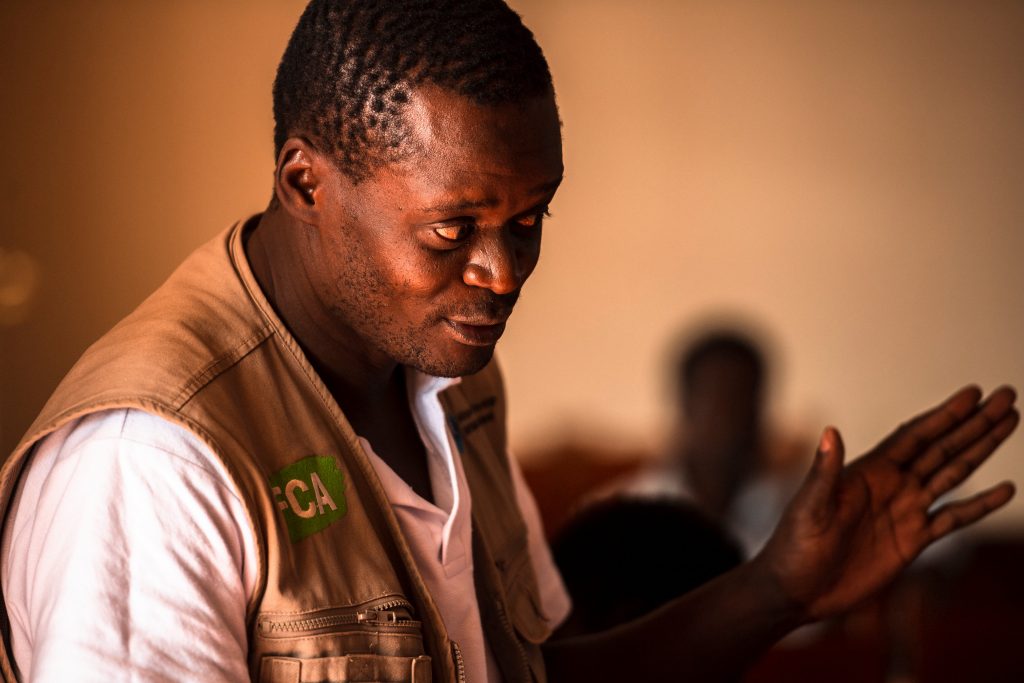
When it comes to education, Tsalwa has seen it all. He has been a humanitarian for fifteen years and has worked in Nigeria, Sudan, Chad, Sri Lanka and, for the last three years, in Kakuma for FCA. “We have seen education changing the lives of these refugees,” Tsalwa says.
Giving every child an education is simple in theory, but in practice, ‘the challenges are many’, especially among refugee populations. Sustainable Development Goal number four is to ‘ensure inclusive and equitable quality education and promote lifelong learning opportunities for all’. The reality is that there is no single organisation or authority responsible for this. In Kakuma, the responsibility for primary and secondary education for refugees lies with the United Nations High Commission for Refugees (UNHCR), however their primary mandate is protection, not education.
Funding cuts mean more students per teacher
Funding cuts in the aid sector mean that FCA has less money to pay teachers in 2022 – funds for next year are 40% less than in 2021 which means less teachers or smaller salaries.. “… if you reduce the teachers, the number of learners is increasing – there are new ones coming in … Right now we have a gap of 35 teachers and … we can only absorb (pay) these teachers just for six months,” says Tsalwa.
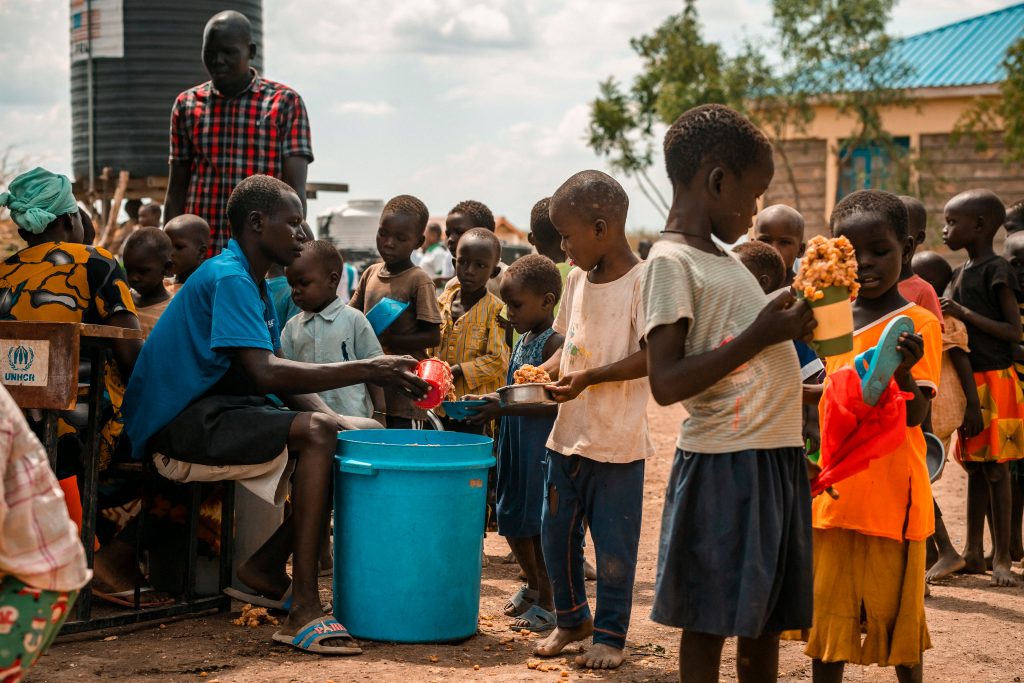
Beside teacher salaries, there are other costs of running a school such as teaching and learning materials, equipping children with special needs, supporting teenage mothers. The World Food Program funds school meals which for some children, is their only meal of the day.
As little funding as there is for primary education, there is even less for secondary. This results in high dropout rates. Among refugees aged from 14-17, only five percent attend school. This is lower than the rate in Turkhana County (nine percent) where Kalobeyei is located and well below the 38 percent national average.
FCA training refugees to teach
With so few refugees finishing high school very few are qualified to become teachers, but this is something that FCA is trying to address by providing scholarships to refugees to attend a new teacher training college close to Kakuma. Funded by UNHCR, the college has the capacity for one hundred students, and Mawut Wwor Chol is one of the first to attend lectures there. Originally from Ethiopia, Chol started studying at the college in October, but his journey to get there epitomises the challenges that refugees face.
Chol started Secondary School in 2011 and, due to ‘issues’, had to repeat his first class. During his exams for his school certificate the camp was ‘in a mess’. “There was infighting among the refugees. There was a fighting that messed up the camp and there was insecurity … I had sleepless nights. I would be watching from seven in the evening up to the daybreak and then I went to write the exam until I completed,” says Chol.
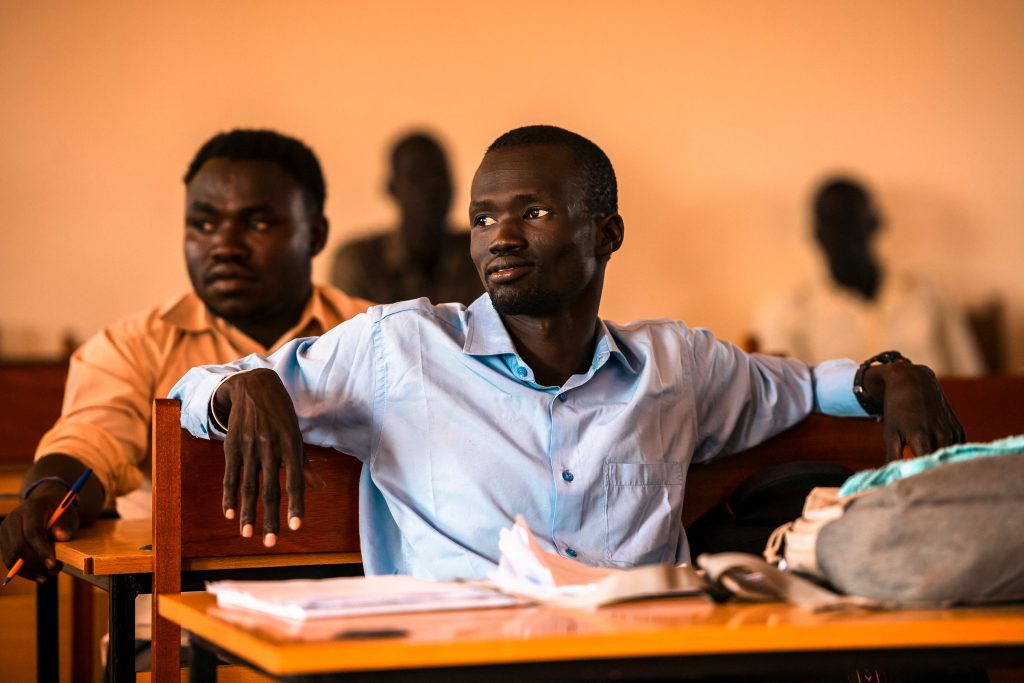
He failed his exams. “That made me bitter,” he says. Determined, he decided to repeat and was offered a scholarship at a school in Kitale, a large town in Western Kenya. This time he passed, but it still took him another year to find a job as a teacher in Kakuma. When he finally did, he seized every educational opportunity that came his way and has even completed a course with Regis University in the United States in March 2021. “Instead of going to Nairobi University or anywhere there, we are trying to get it piece by piece, so that we join the educated world,” says Chol.
If the challenges for men like Chol are many, the challenges for women are even more. The few who complete secondary school have very low grades, so finding qualified female teachers is very difficult.
“At ECD (early childhood development) the ratio is fifty-fifty, boys to girls. As you go up the grades, the ration decreases to about a third of girls in the classrooms. They leave school for many reasons – domestic work, looking after other children, pregnancy and early marriage,” says Tsalwa.
Women face more challenges
These challenges are something that Roda Daniel knows well. A refugee from Sudan, she fled to Kenya, alone, after primary school. Girls like her are particularly vulnerable, and so she was enrolled in an all-girls boarding school. This helped her to focus on her studies and she graduated and became a teacher. Now, she is the deputy head teacher at Morning Star Primary School (which is supported by FCA) and is one of the first students to study at the teacher training centre.
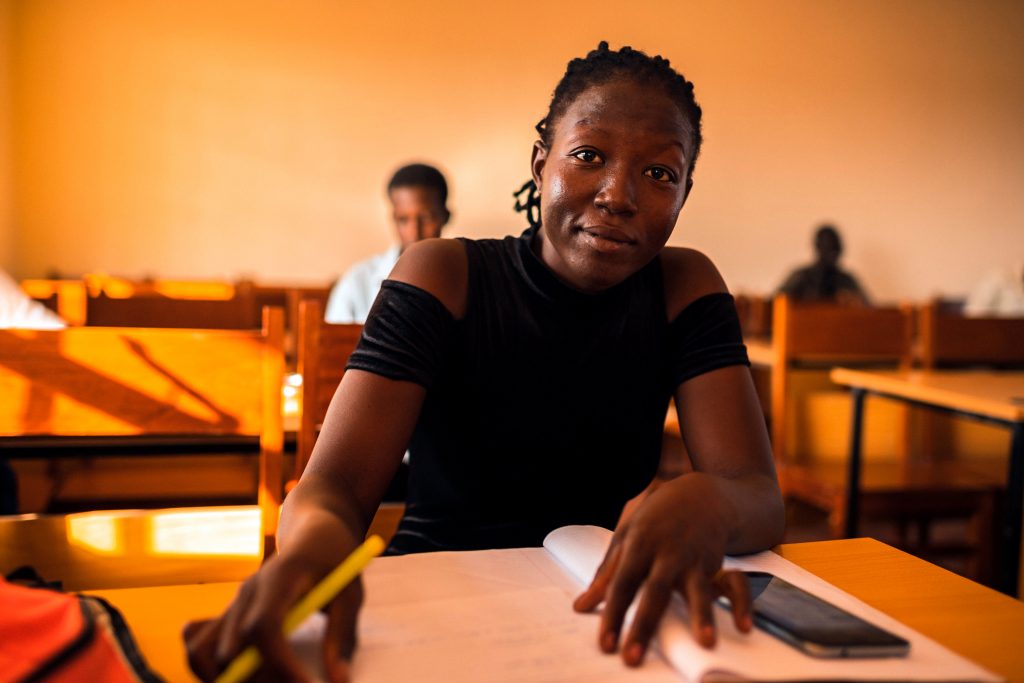
“Going to school from very early in the morning and coming out from here 5-5.30 you reach home six. With some females, like the lactating mothers, it becomes a challenge. What we came to realise, when the few were shortlisted, it was a qualification thing that meant most of females were not selected. Though many of us hoped to have this course, now, very few, very few are picked because of the qualifications,” says Daniel.
Despite affirmative action, that recognises experience instead of qualifications, Daniel was only one of ten female students out of sixty in the first intake at the college. Those who were ‘picked’ realise how lucky they are. When you walk into the lecture hall of the training college there is a palpable feeling of optimism. Although this might be said of any group of young hopefuls, but it is amplified by the challenges that these students have had overcome to make it here. “You see the hunger for education, especially among the South Sudanese,” says Dennis Wamalwa, the lecturer.
The education diploma offered at the Teacher Training College is a compressed course that takes just over a year, whereas a diploma in a public university takes between two and two and a half years. At the college, students learn onsite and online and the first intake should graduate in December next year.
Tsalwa is hopeful that the training college will improve the standard of education and teaching in Kakuma. “I hope to see well trained teachers (in 2022) who will definitely boost the quality of teaching and learning in our schools
… when we talk of quality, you can only talk of quality when you have trained teachers to deliver the curriculum,” says Tsalwa.
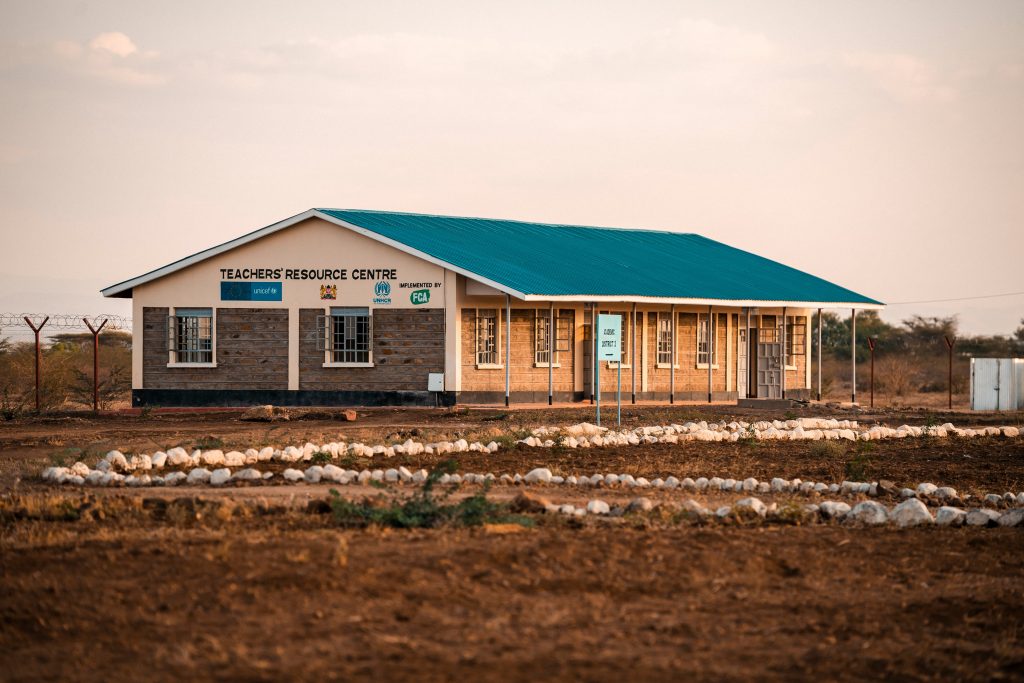
Tsalwa is also a realist and knows that once the refugees are qualified, they may leave teaching for other opportunities. He says that “… if you graduate in Kenya with a primary school certificate, you are well-qualified if you go back to South Sudan.”
“When you train them well, they get other jobs, because they don’t like teaching. They do it because they don’t have any other choice, so we have a high turnover of teachers,” he says. There is very little that can be done about this. Tsalwa knows himself how stressful teaching is even when they aren’t dealing with over a hundred students. Chol acknowledges this also, “I think it (the course) is a gateway for another opportunity.”
But Roda Daniel is different and illustrates why it is important to create opportunities for women. “With my mindset, I am still just within Kenya. And after graduating I will still see ahead if I will really get an opportunity to do a degree. Meanwhile (it is) still best teaching or supporting our community.”
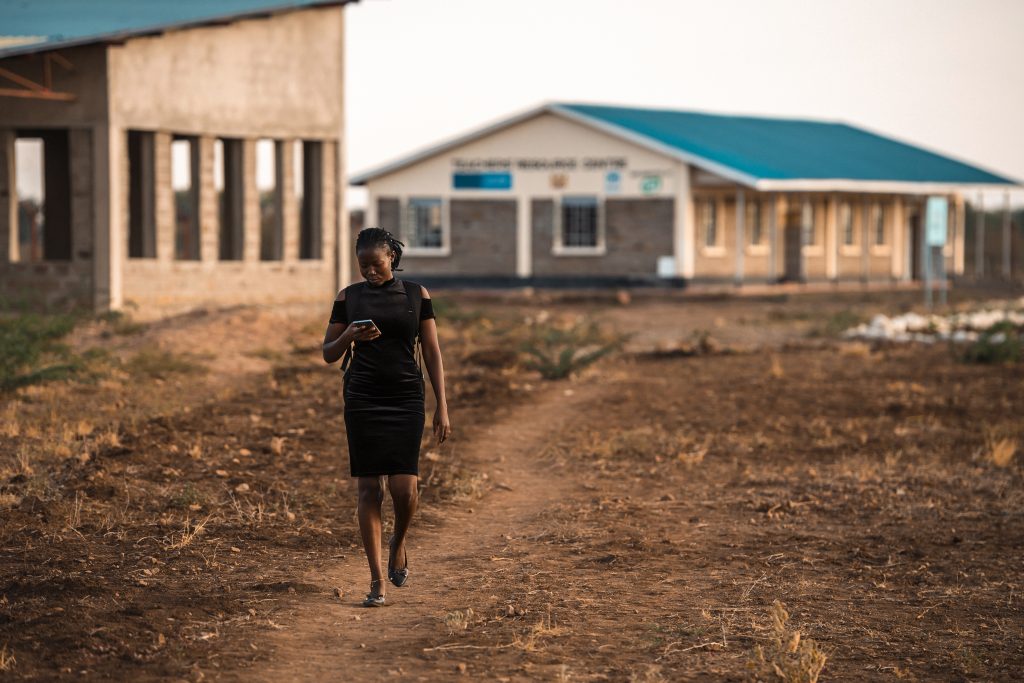
Text: Melany Markham
Photos: Antti Yrjönen